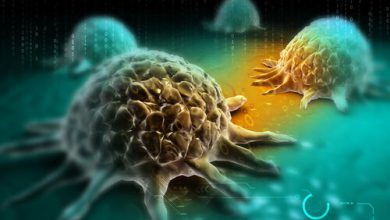The Different Types Of Chemotherapy

Chemotherapy, as you probably already know, is one of the most widely used therapeutic modalities in the treatment of cancer. It encompasses a wide variety of drugs, so many types of chemotherapy are available.
The goal of this type of treatment is to destroy cancer cells in order to reduce the disease. However, there are still no types of chemotherapy that only affect cancer cells, so they also damage many healthy structures, causing strong adverse effects.
Let’s see, throughout this article, the different types of chemotherapy that exist and their main characteristics.
Alkylating agents
Alkylating agents reach their highest level of activity during the resting phase of the cell and are not specific to the cell cycle. In turn, there are different types that are used in chemotherapy treatments:
- Derivatives of mustard gas : cyclophosphamide, for example.
- Ethyleneimines: hexamethylmelamine is one of them.
- Hydrazines and triazines : altretamine and procarbazine, among others.
- Nitrosureas: They are unique because, unlike most types of chemotherapy treatment, these can cross the blood-brain barrier, which is the membrane that protects the brain. That is why they can be useful in the treatment of brain tumors.
- Metal salts.
Plant alkaloids
It is a type of chemotherapy that comes from certain plants. For example, vinca alkaloids are produced from vinca rosea or Catharanthus rosea . This group also includes the taxanes, whose origin is the Pacific yew tree.
All plant alkaloid chemotherapeutic drugs are, unlike the previous group, cell cycle specific. This means that they attack cells depending on the division phase in which they are. In addition to the vinca alkaloids and taxanes, podophyllotoxins and camptothecin analogs also belong to this group.

Antitumor antibiotics
This is another type of chemotherapy that comes from natural substances. In this case, its origin is not vegetable, but these principles are synthesized by the Stretomyces fungus .
Antitumor antibiotics exert their effect on cancer cells at different phases of the cell cycle, not at a specific time as occurred with the previous ones. Let’s see some of the most frequent forms of presentation:
- Anthracyclines: such as doxorubicin or epirubicin. These drugs have long-term cardiotoxic effects.
- Chromomycins : dactinomycin, for example.
- Mitomycin.
- Bleomycin
Antimetabolites
Antimetabolites are a type of chemotherapy that is very similar to the natural molecules found in the body’s cells. In this way, by joining the cell metabolism, they go unnoticed and manage to block cell division.
Antimetabolites are classified based on the substances with which they interfere:
- Folic acid antagonist : methotrexate.
- Pyrimidine antagonists : 5-fluorouracil or capecitabine.
- Purine antagonists : 6-mercaptopurine.
- Adenosine deaminase inhibitors : cladribine, fludarabine, nelarabine, and pentostatin.

Topoisomerase inhibitors
They are drugs that owe their effect to their ability to interfere with the action of topoisomerase enzymes (both I and II). These enzymes are responsible for manipulating the structure of DNA that is necessary for replication. Some of these drugs are irinotecan or etoposide.
Miscellaneous antineoplastics
As the name of this group indicates, these are chemotherapeutics that do not belong to any other group, since they are unique. Among them we can find:
- Mitotane.
- Asparaginase and pegaspargasse.
- Estramustine.
- Retinoids
Conclution
In addition to chemotherapy, there are many other types of chemical therapies for cancer, such as targeted therapies, immunotherapy, or hormone therapy. Thanks to all these therapeutic agents, great strides have been made in the treatment of cancer.
However, the challenge ahead is still very great and it is necessary to continue researching in this therapeutic area. The ultimate goal is to achieve types of chemotherapy that are highly specific, attacking to a low extent the own cells, but effectively the tumor cells.









